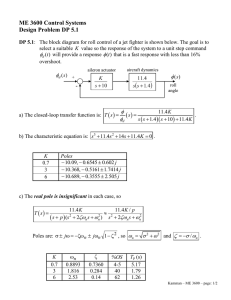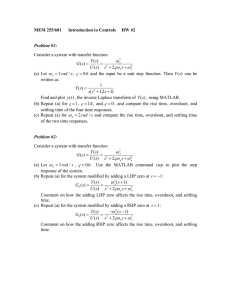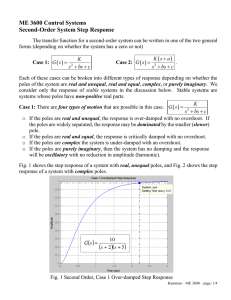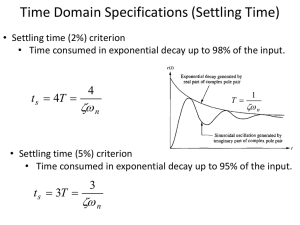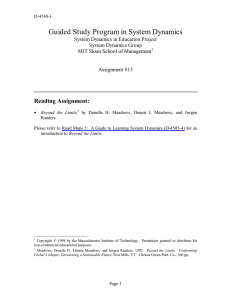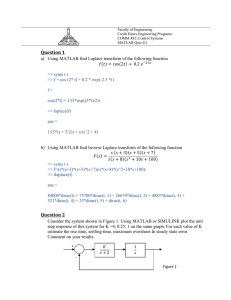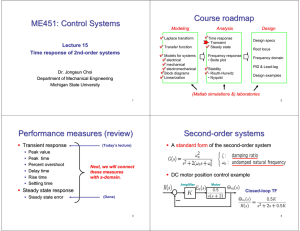ME 3600 Control Systems
advertisement
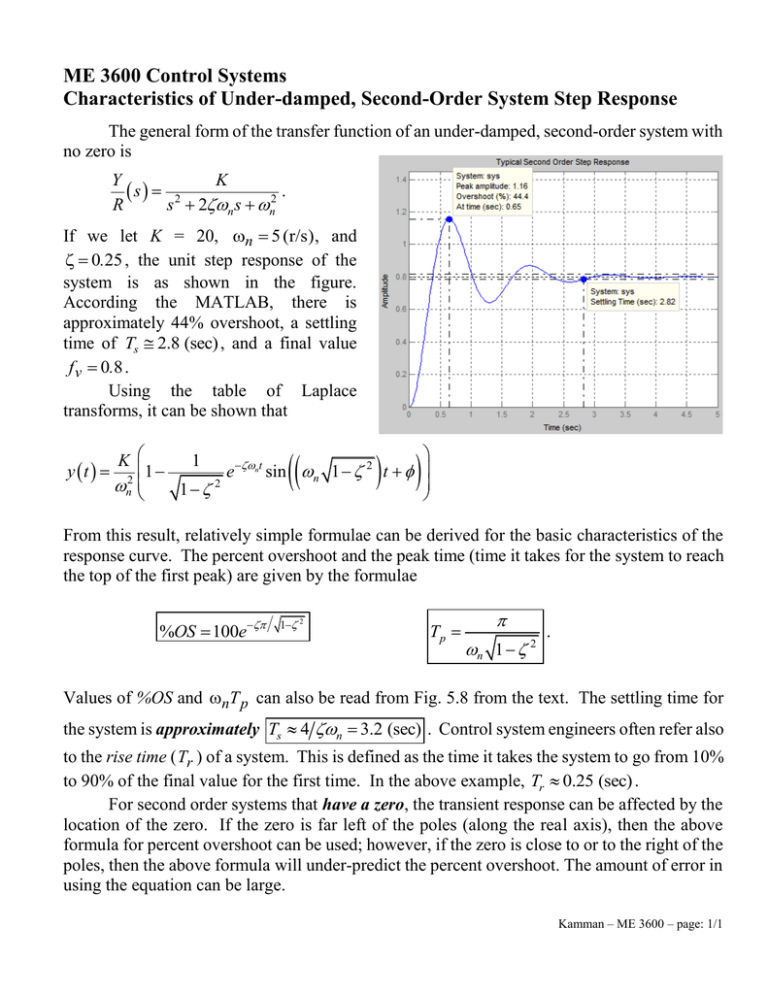
ME 3600 Control Systems Characteristics of Under-damped, Second-Order System Step Response The general form of the transfer function of an under-damped, second-order system with no zero is Y K . s 2 R s 2n s n2 If we let K = 20, n 5 (r/s) , and 0.25 , the unit step response of the system is as shown in the figure. According the MATLAB, there is approximately 44% overshoot, a settling time of Ts 2.8 (sec) , and a final value f v 0.8 . Using the table of Laplace transforms, it can be shown that K 1 y t 2 1 ent sin n 1 2 t n 1 2 From this result, relatively simple formulae can be derived for the basic characteristics of the response curve. The percent overshoot and the peak time (time it takes for the system to reach the top of the first peak) are given by the formulae %OS 100e 1 2 Tp n 1 2 . Values of %OS and nT p can also be read from Fig. 5.8 from the text. The settling time for the system is approximately Ts 4 n 3.2 (sec) . Control system engineers often refer also to the rise time ( Tr ) of a system. This is defined as the time it takes the system to go from 10% to 90% of the final value for the first time. In the above example, Tr 0.25 (sec) . For second order systems that have a zero, the transient response can be affected by the location of the zero. If the zero is far left of the poles (along the real axis), then the above formula for percent overshoot can be used; however, if the zero is close to or to the right of the poles, then the above formula will under-predict the percent overshoot. The amount of error in using the equation can be large. Kamman – ME 3600 – page: 1/1
